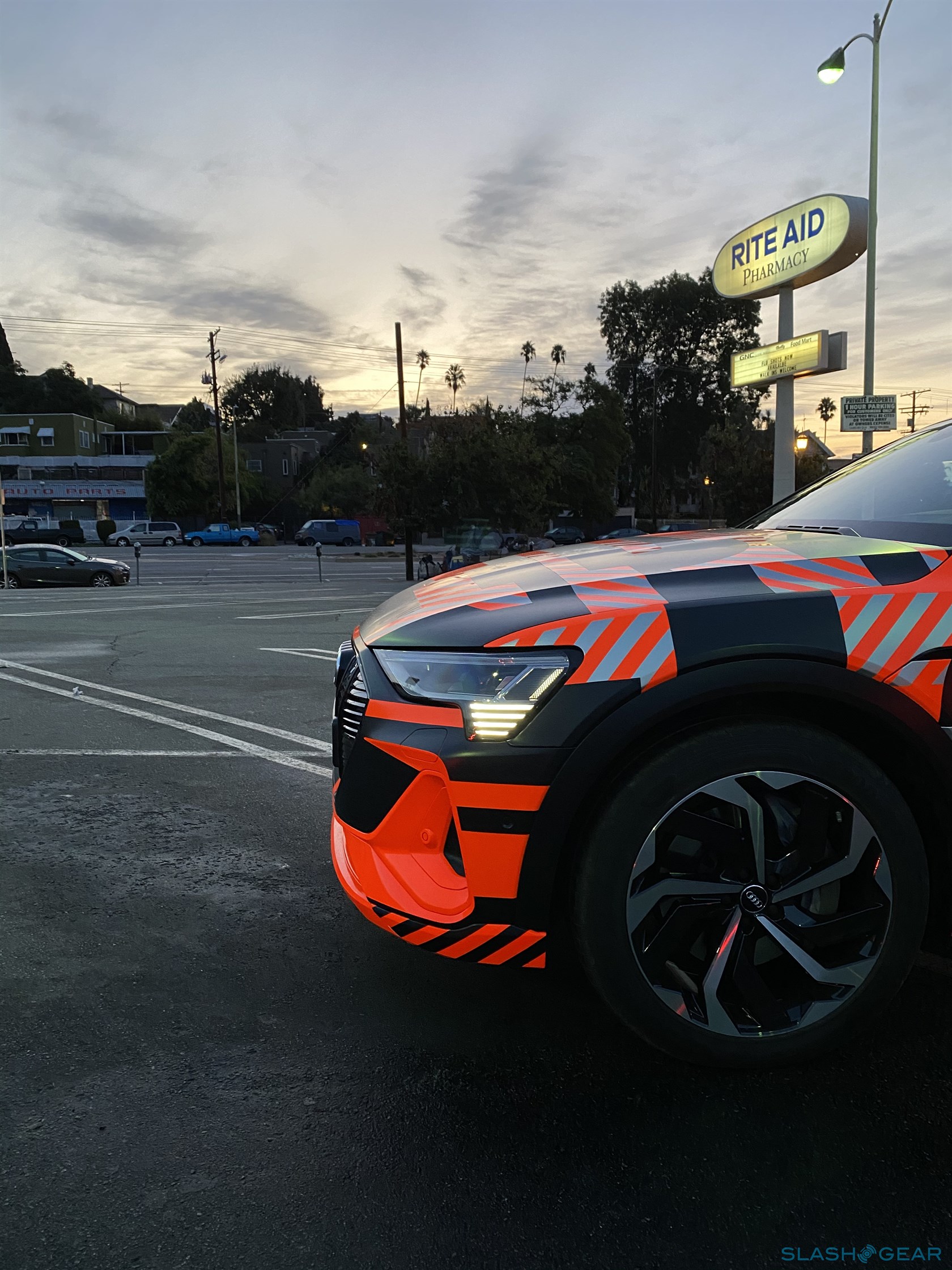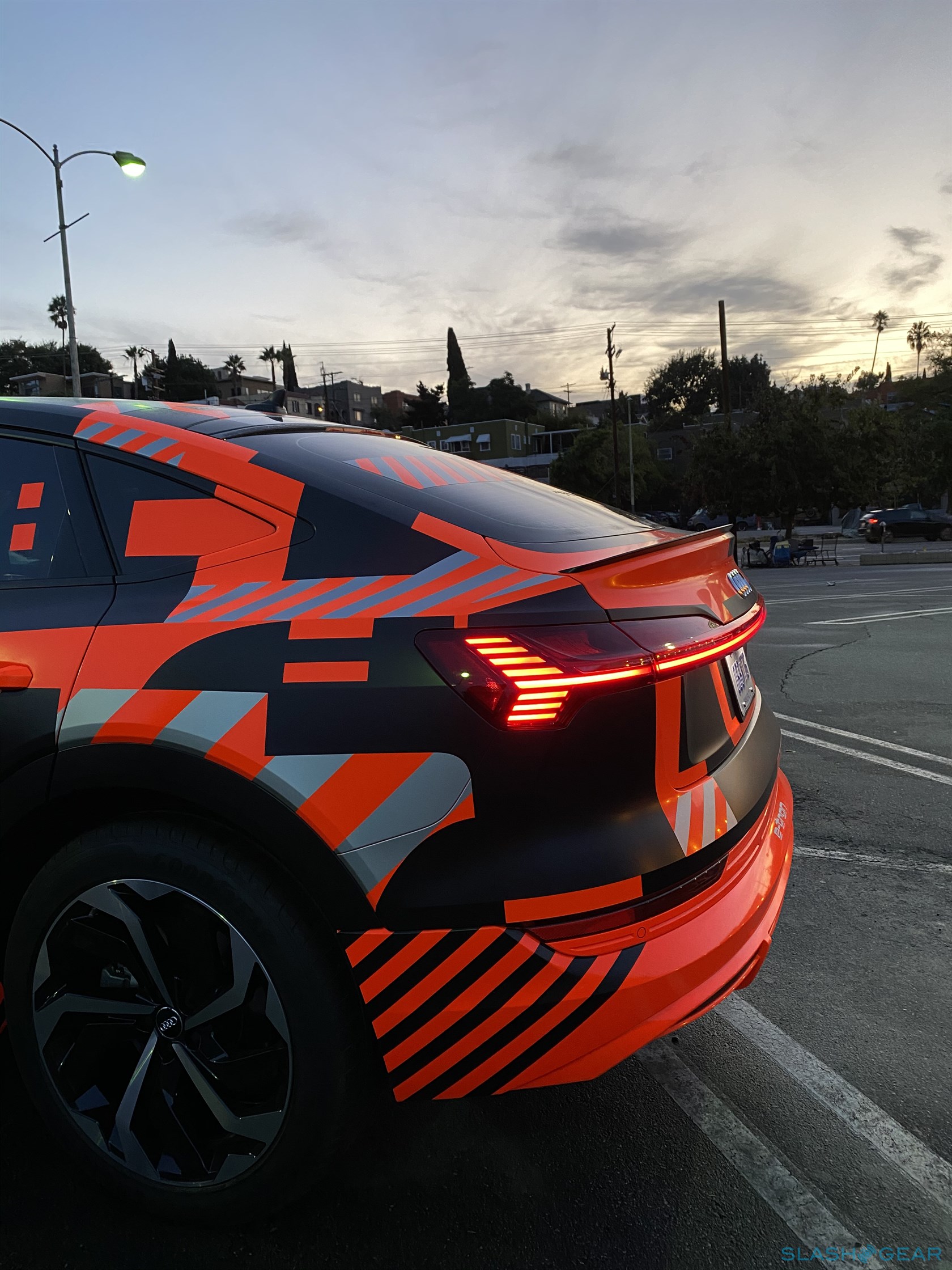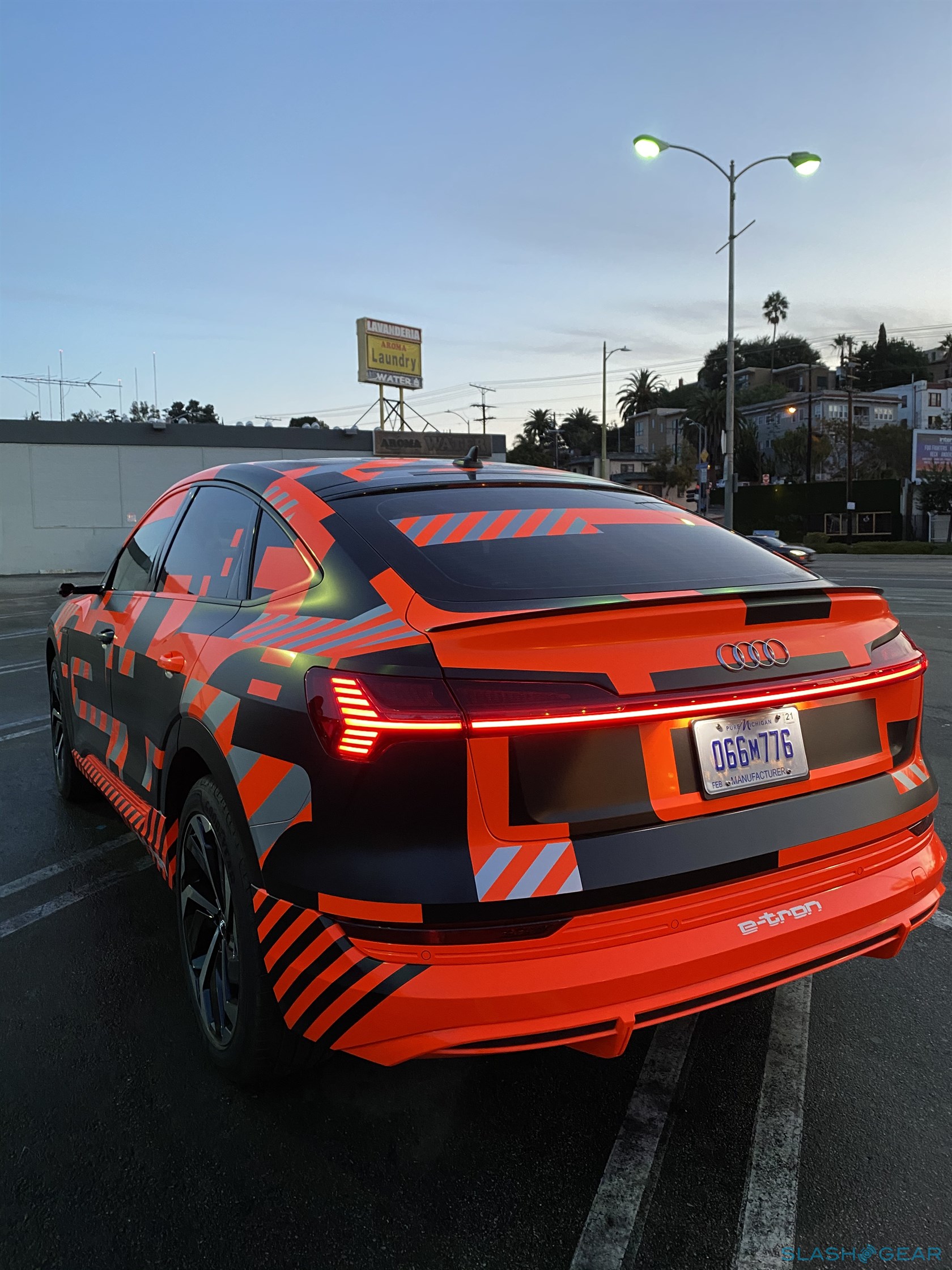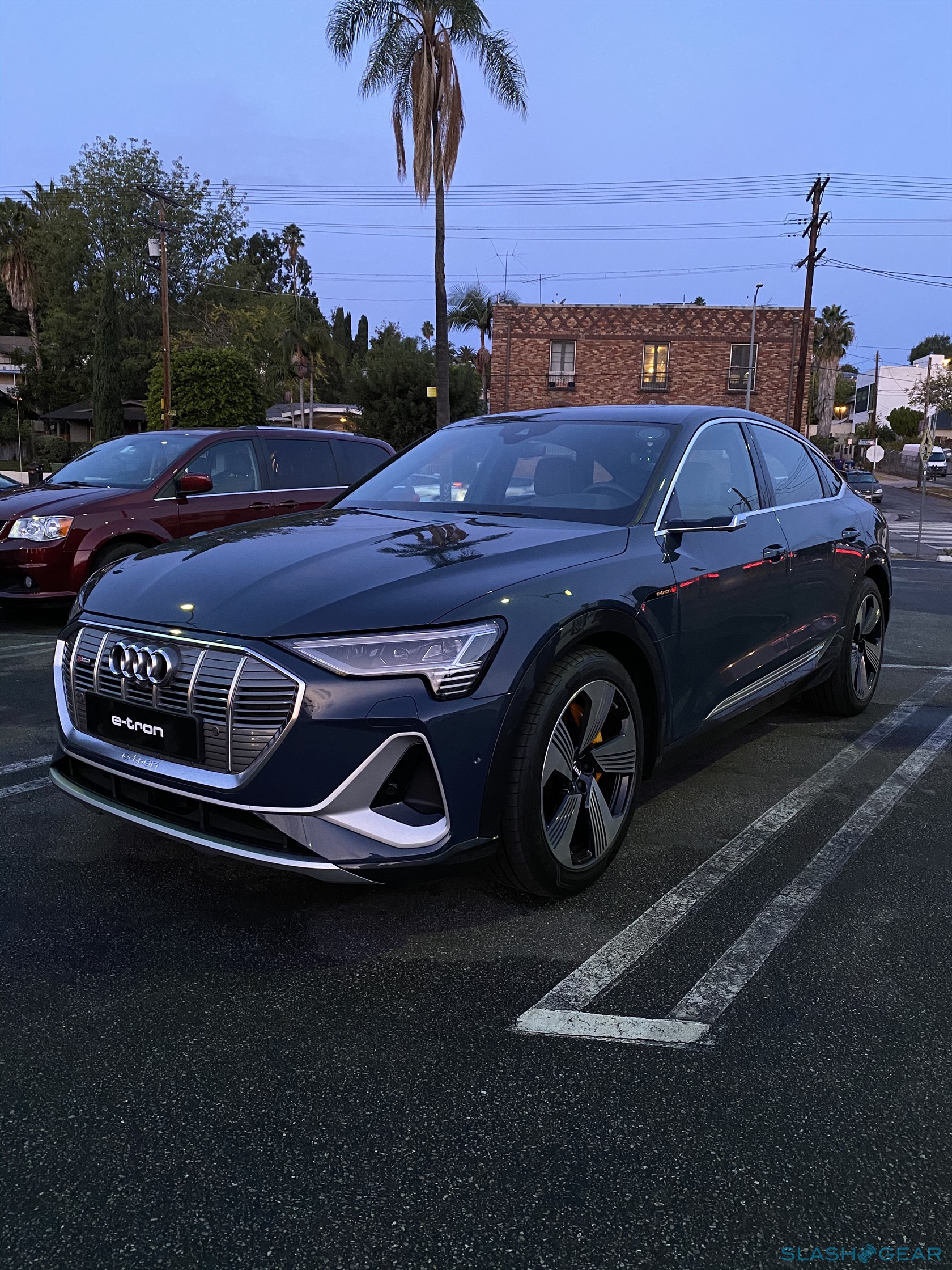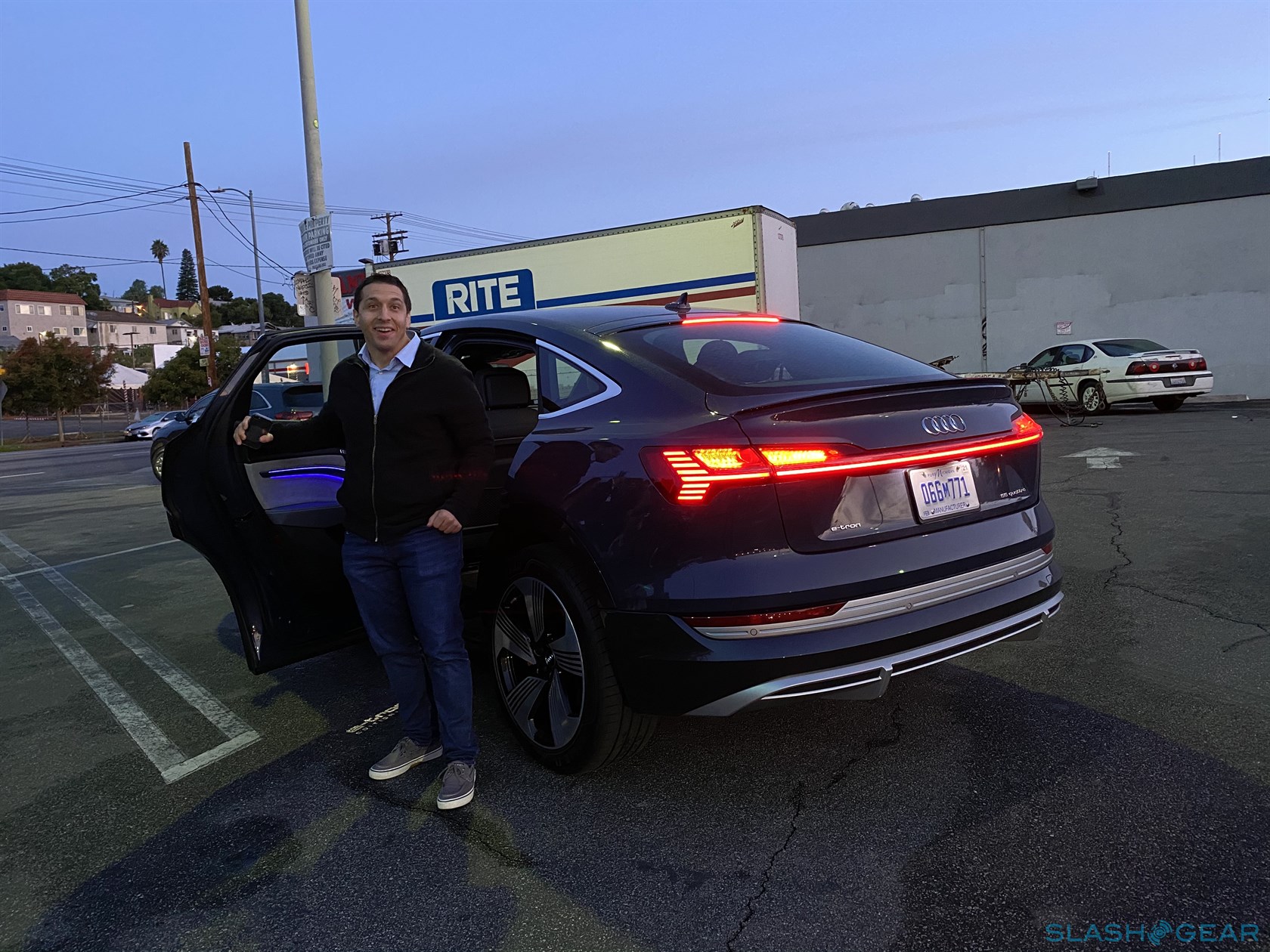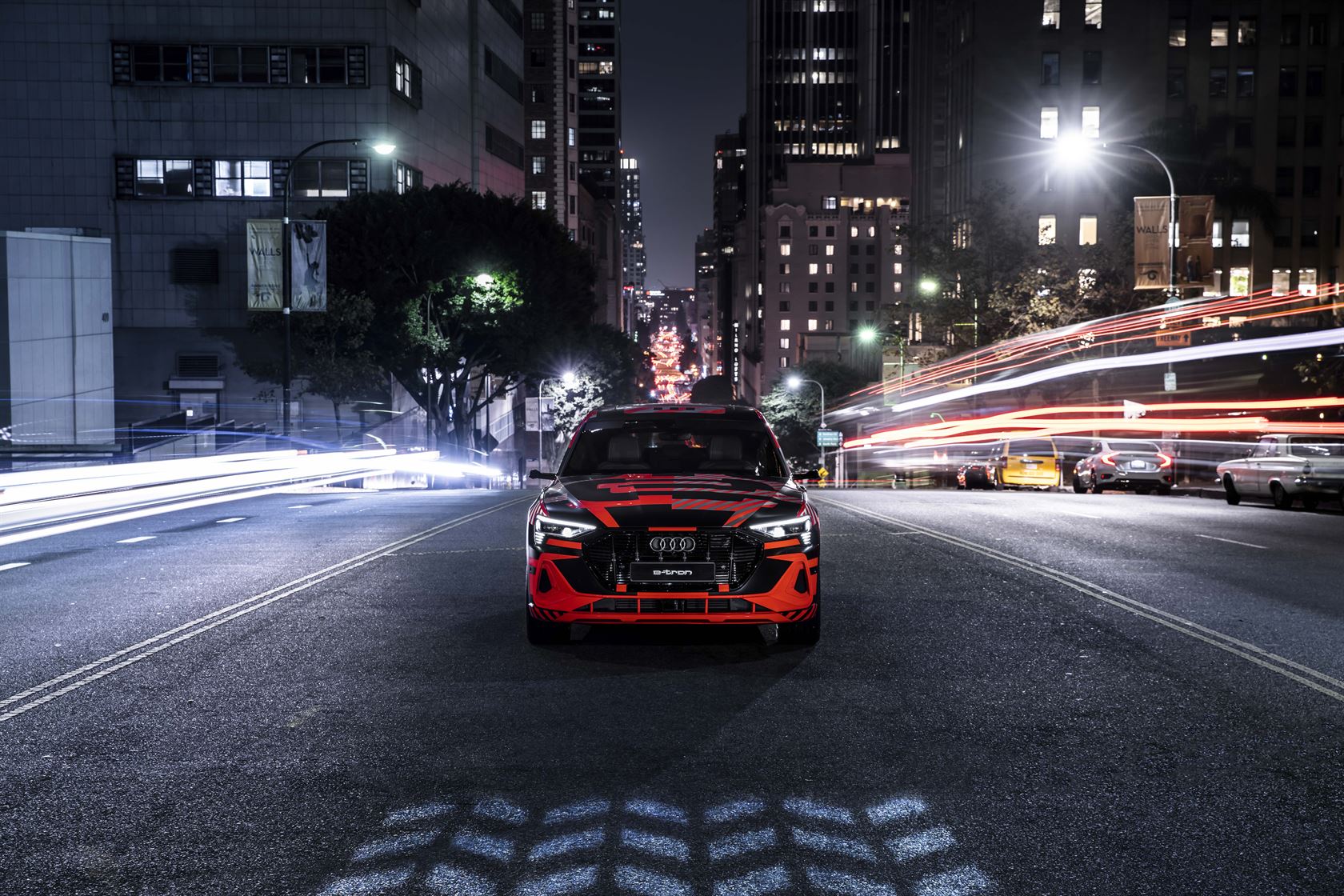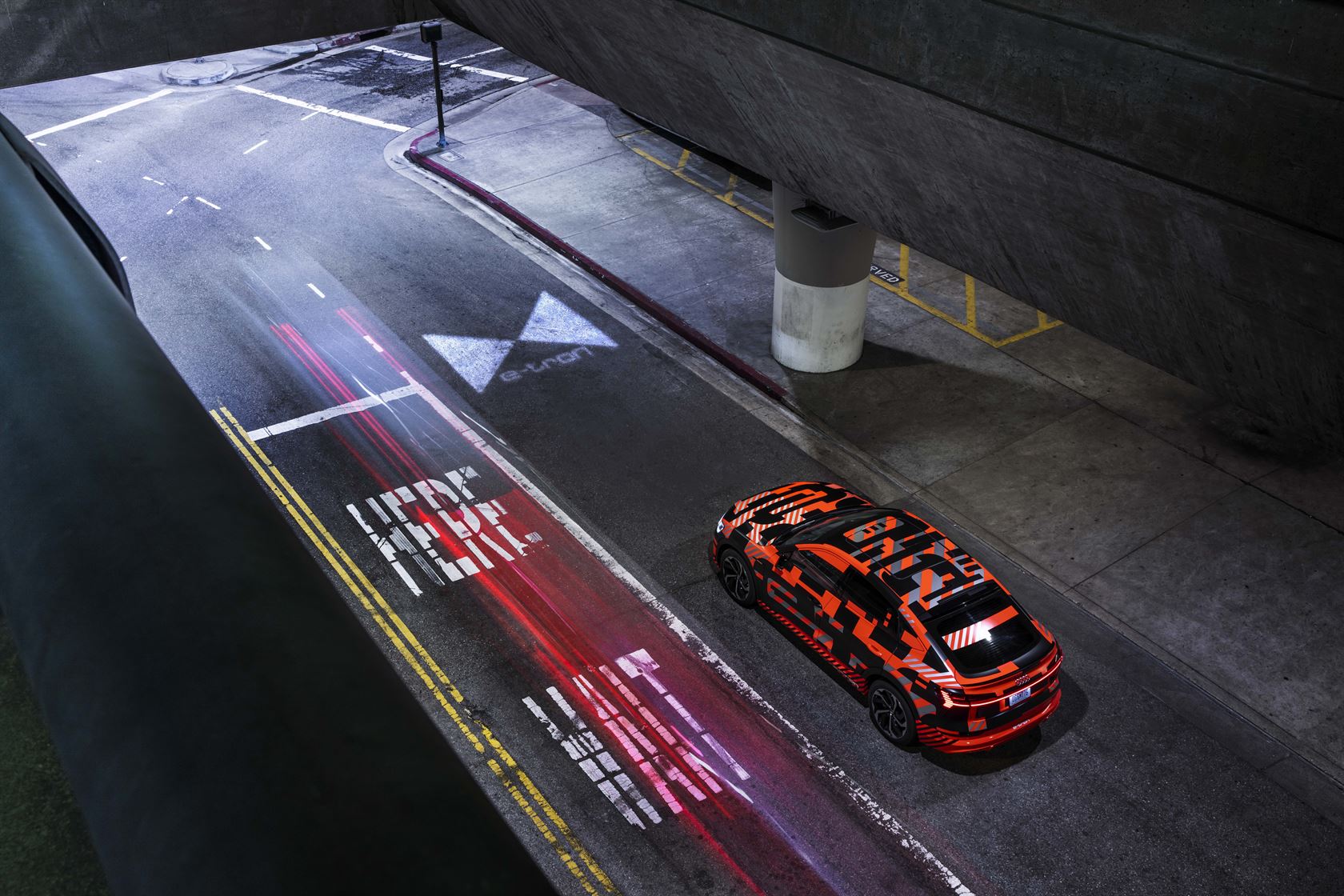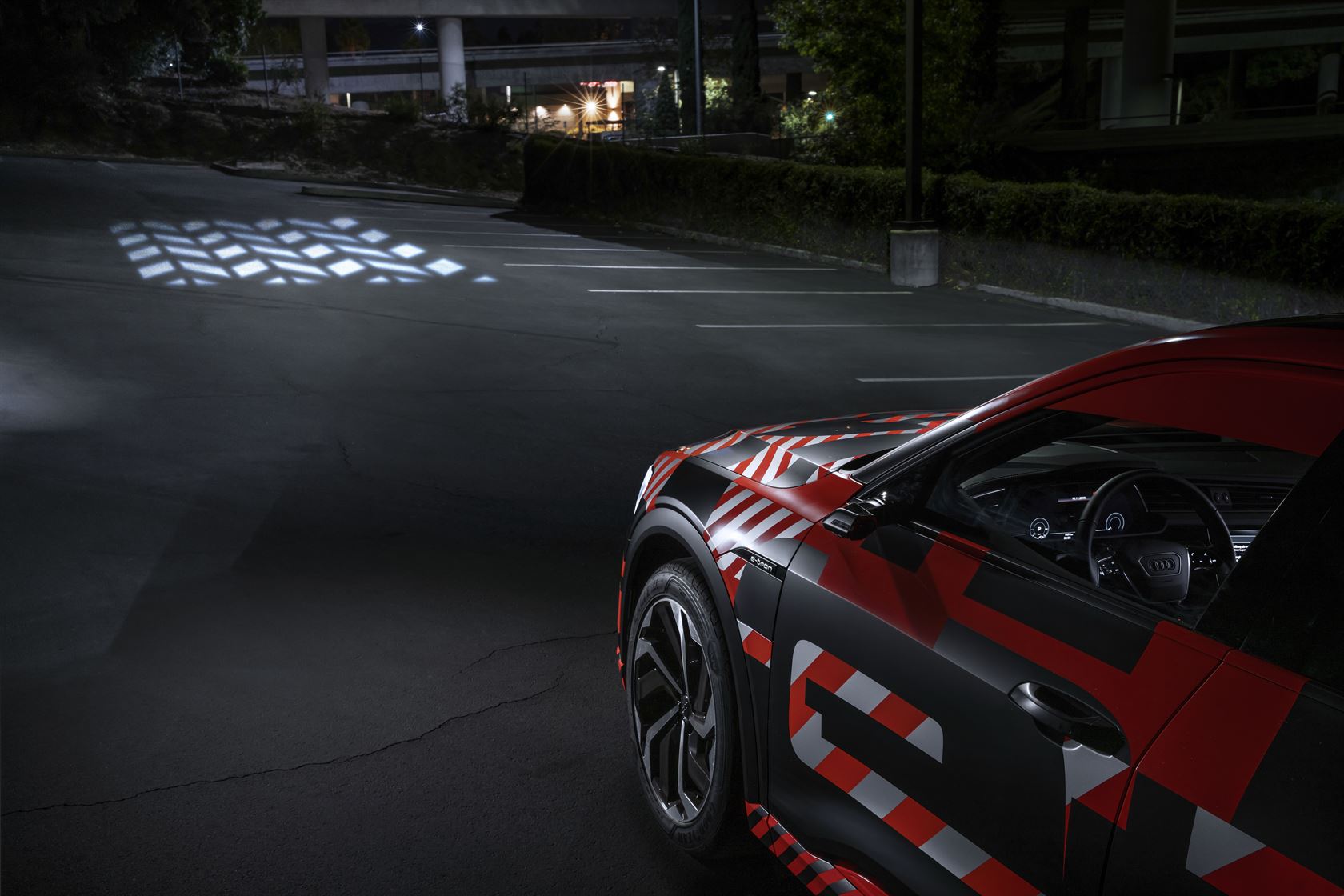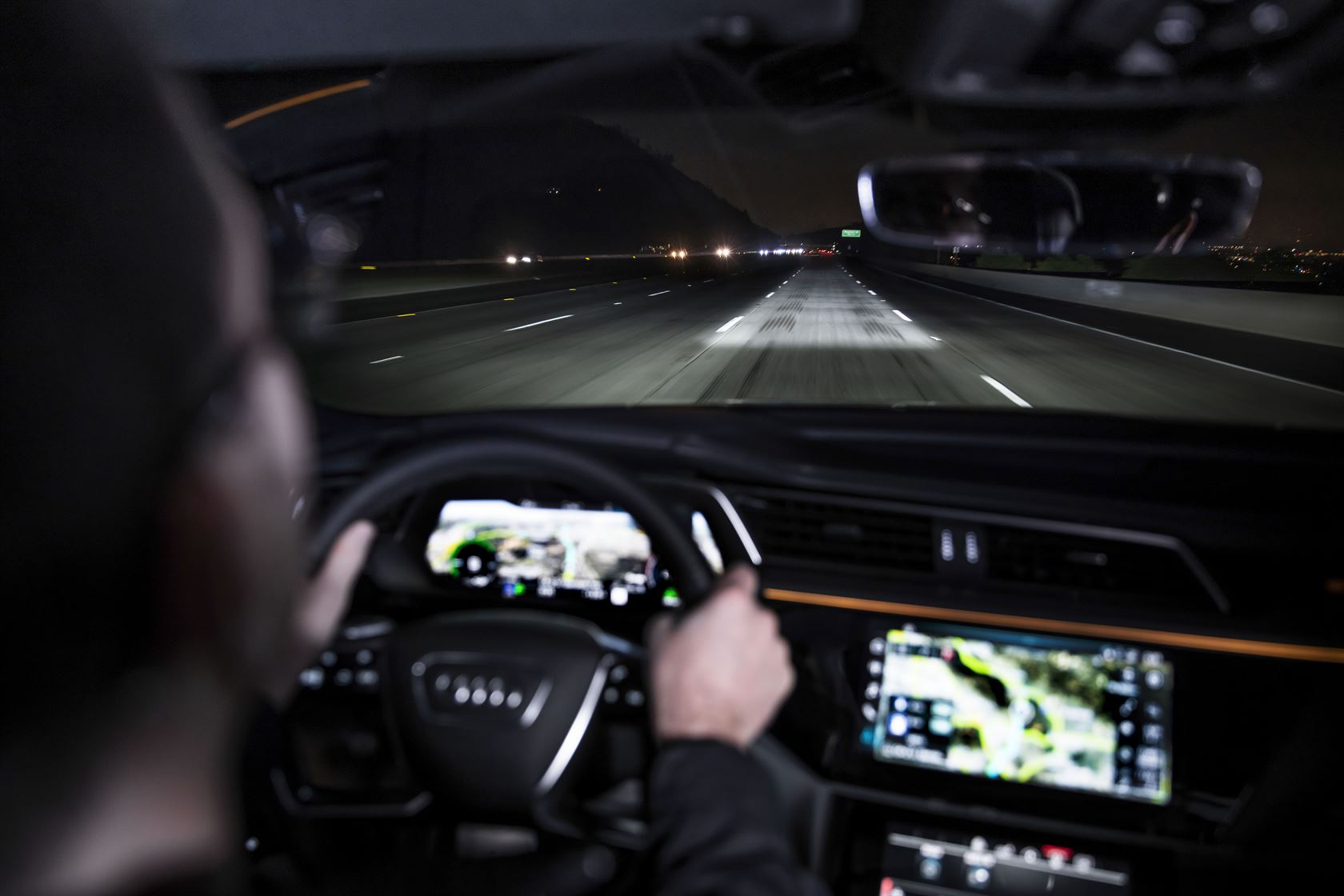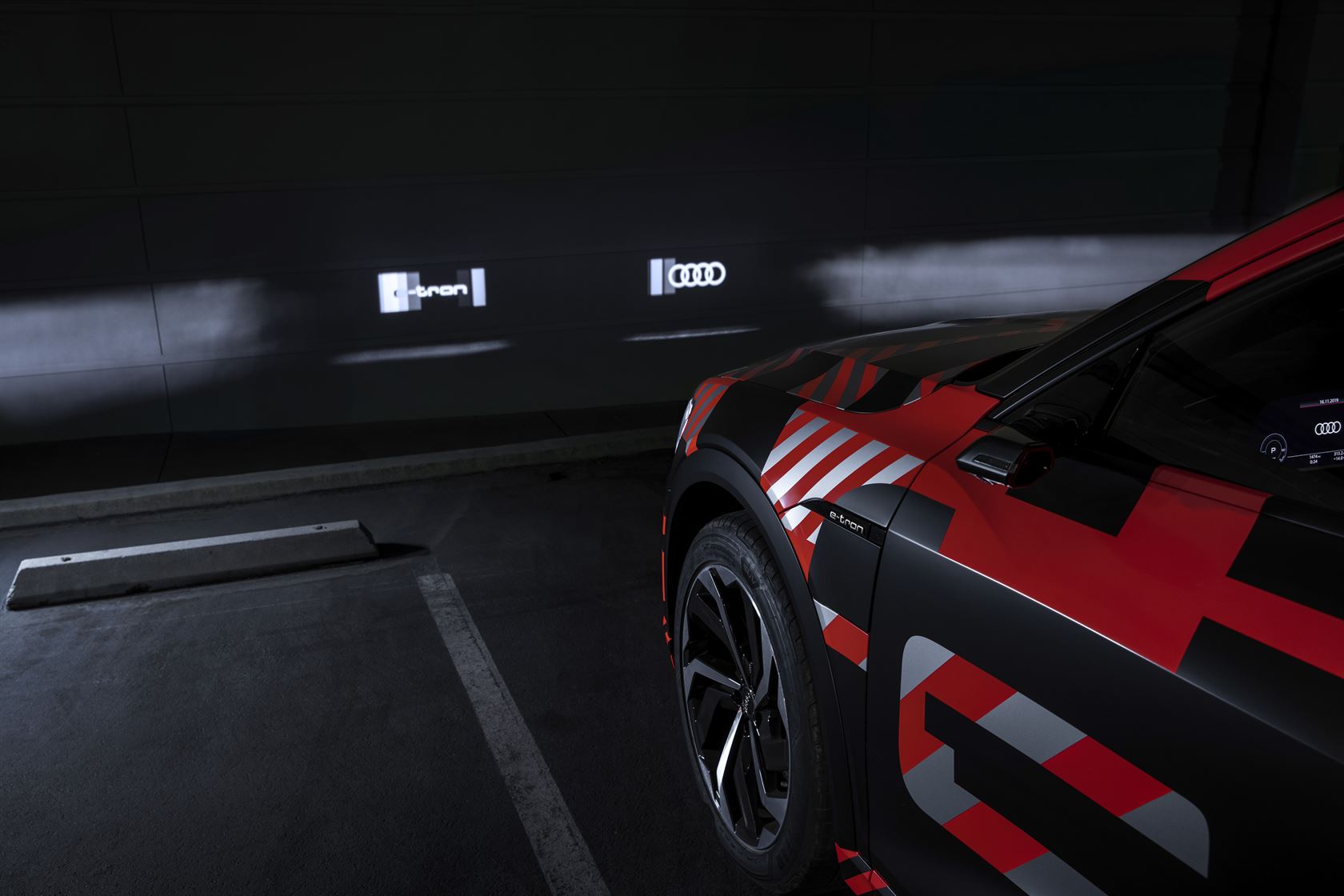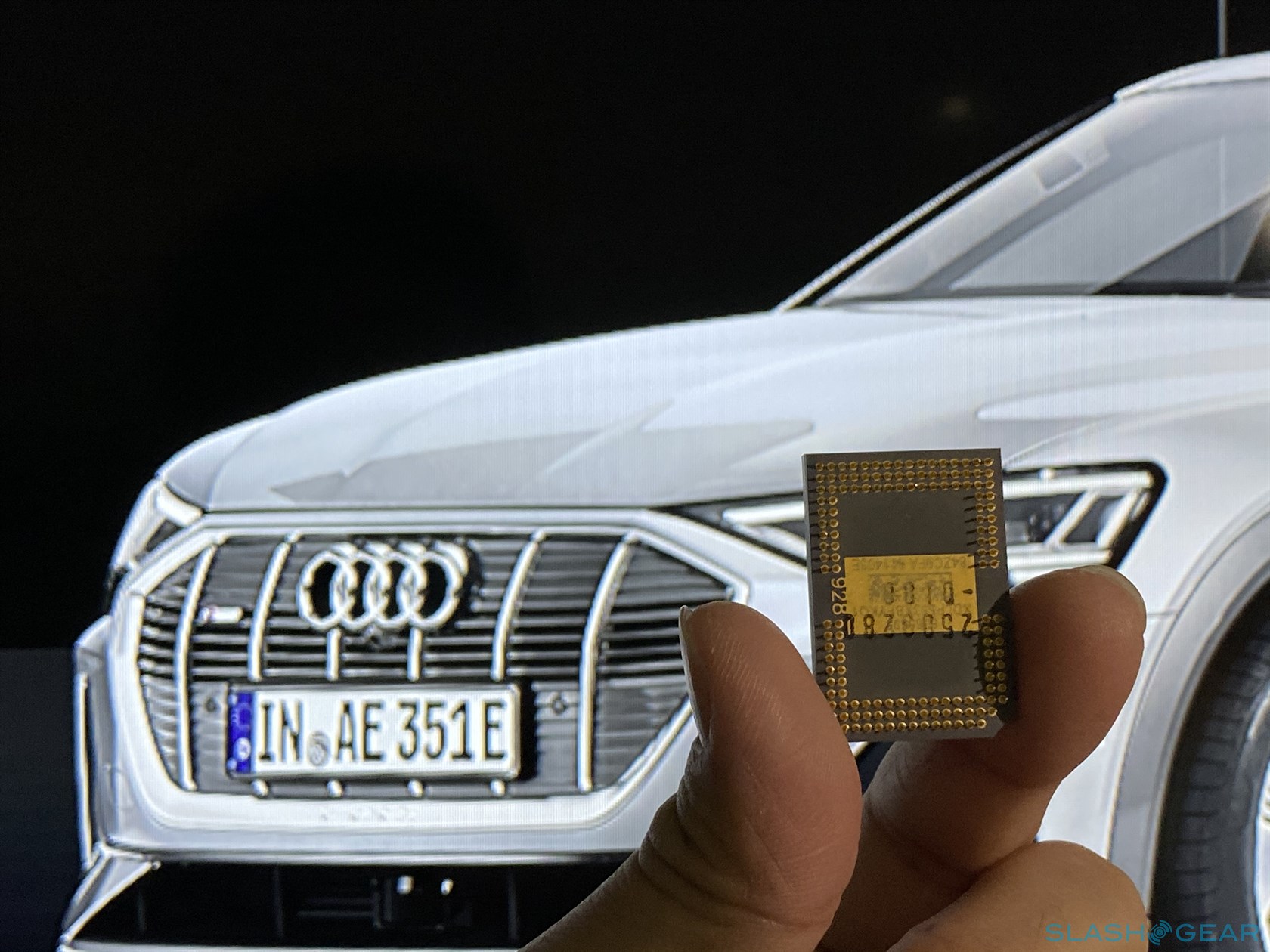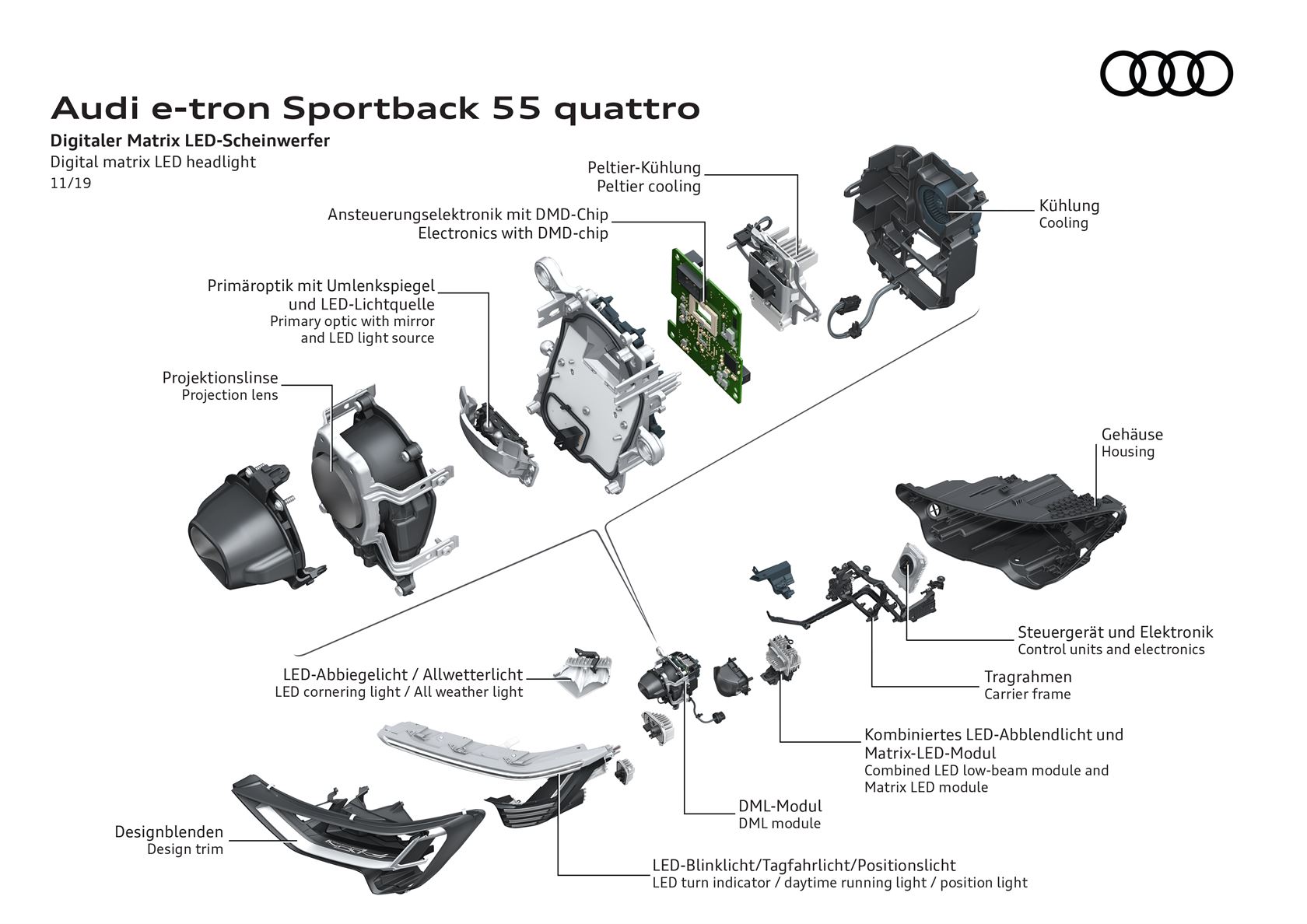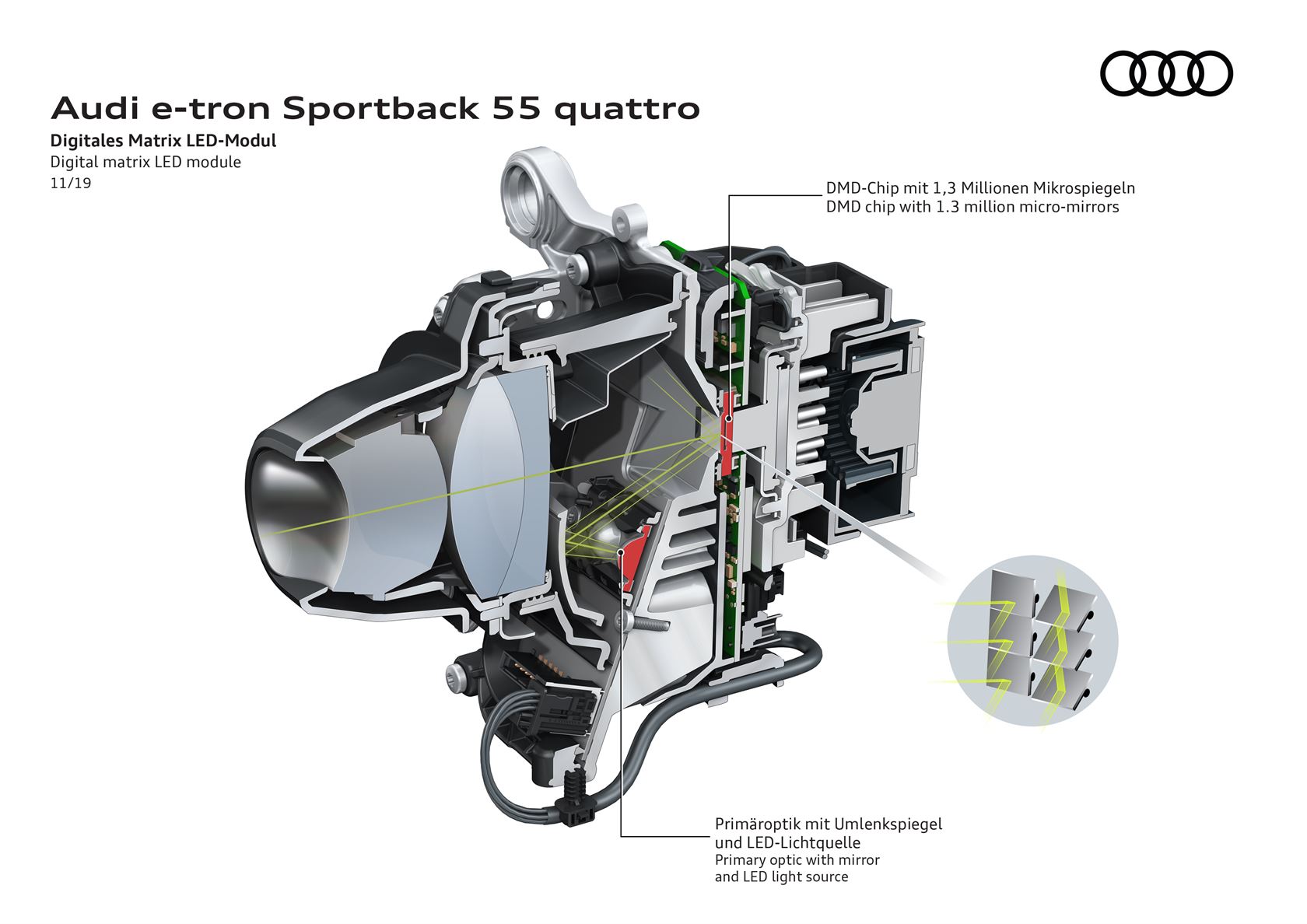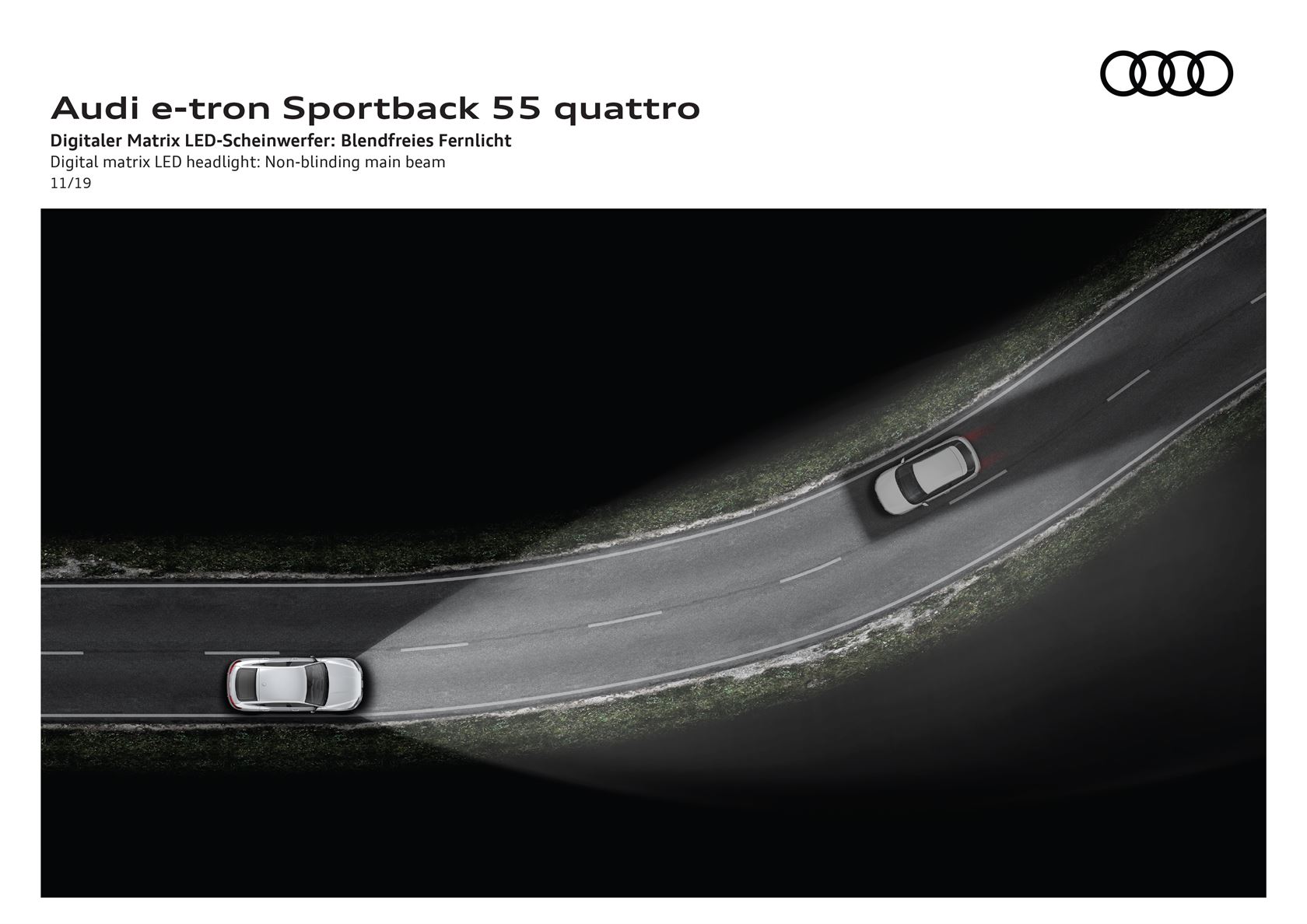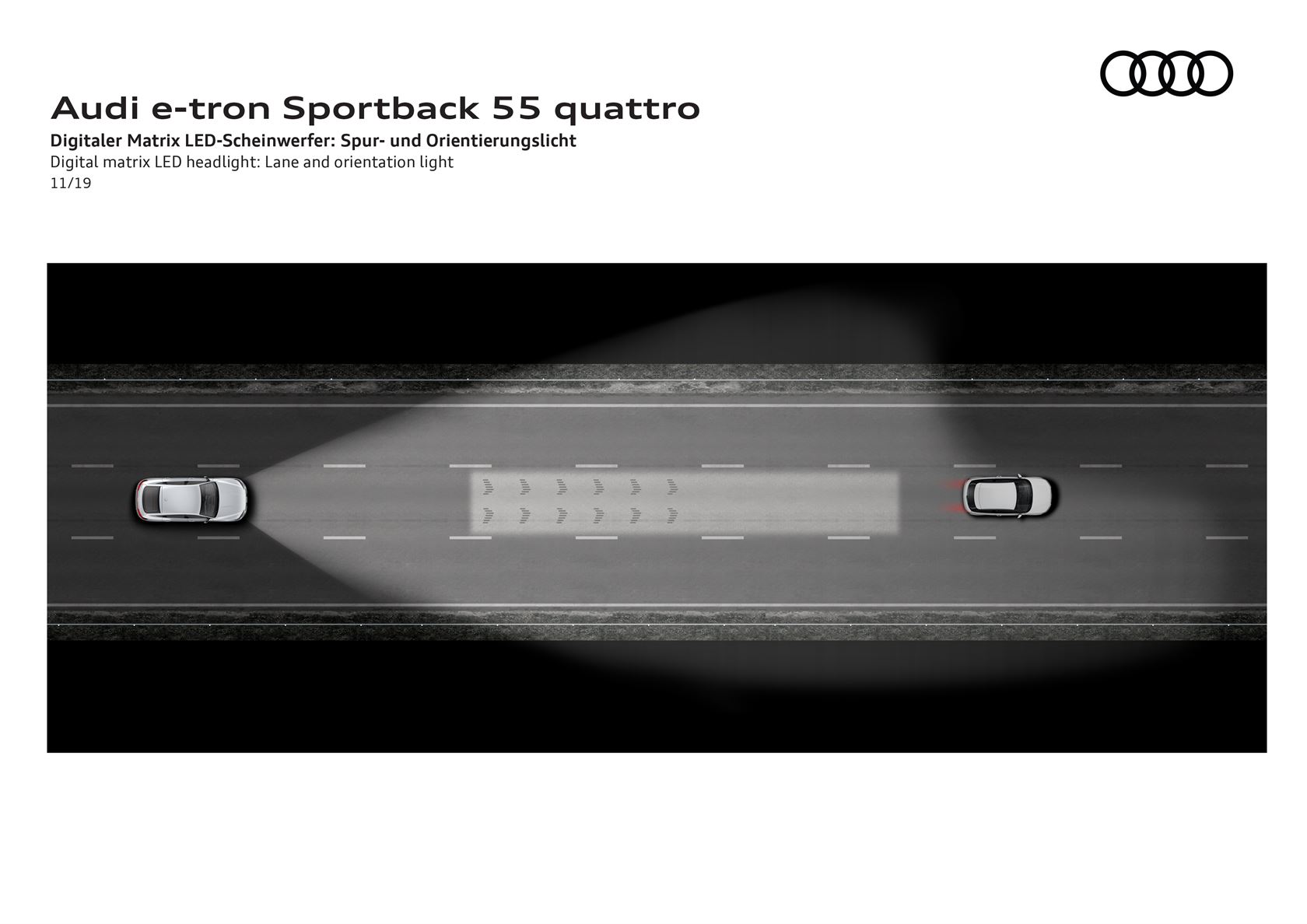Audi Digital Matrix LED Headlights First Look: The E-Tron Tech The US Can't Have
For those of you old enough to remember, the Audi R8 was the first production car to feature LED headlights. Back then, automotive LED lighting technology was in its infancy: the R8 was at the dawn of an age of newer, more modern, and hi-tech looking cars. At the 2019 Los Angeles Auto Show, Audi shed some light on something even bigger than the new Audi e-tron Sportback, and it all has to do with the car's digital matrix LED headlights. This, I said to myself, is the future of automotive lighting.
I don't mean to underline the significance of Audi's newest e-tron Sportback, mind you. It's clearly cut from the same cloth as the e-tron SUV, and that's not a bad thing since the Sportback version is essentially an e-tron SUV with a sportier sloping roofline. Everything from the nose to the B-pillars is lifted directly from the e-tron SUV, hence the uncanny resemblance between the two – even the taillights are the same, although the curvier back end of the Sportback gives the tail a snazzier and more athletic stance.
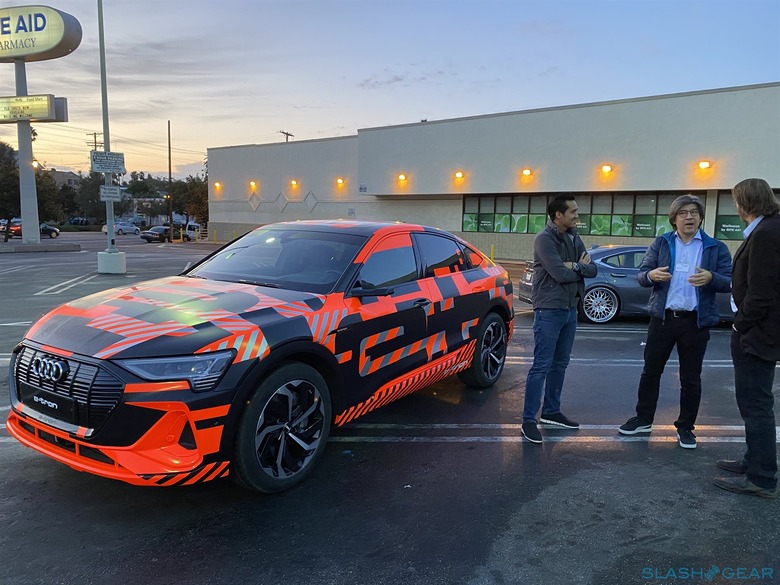
The significance of the e-tron Sportback, though, is cemented in history as the first-ever production vehicle to come with digital matrix headlights. Yes, the system is also coming to the e-tron SUV, but don't expect this tech available stateside any time soon, which is a massive bummer frankly. Apparently, U.S legislation prohibits a vehicle from having anything more than normal low beams and high beams – and it so happens those digital matrix headlights can do so much more. I can't help but get a sense that the regular headlights are akin to the old Motorola flip-phones, while the more advance digital matrix headlights are the futuristic flip-foldable Razr phone that was recently announced. It's a sad state of affair for US buyers.
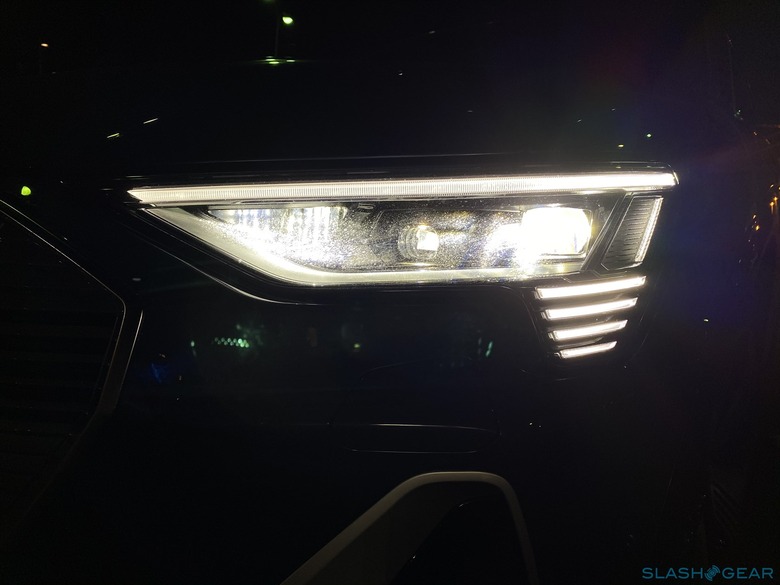
What are we missing out on? I'm guessing you're familiar with adaptive LED headlights from other carmakers, the ones which automatically adjust the beam to prevent blinding oncoming traffic without penalizing night visibility, right? Audi's digital matrix LED headlight design can do that too. It recognizes vehicles and pedestrians in front of the car and adjusts the headlight beam as needed. But what's totally revolutionary with Audi's system is the capability to project a literal carpet of light ahead.
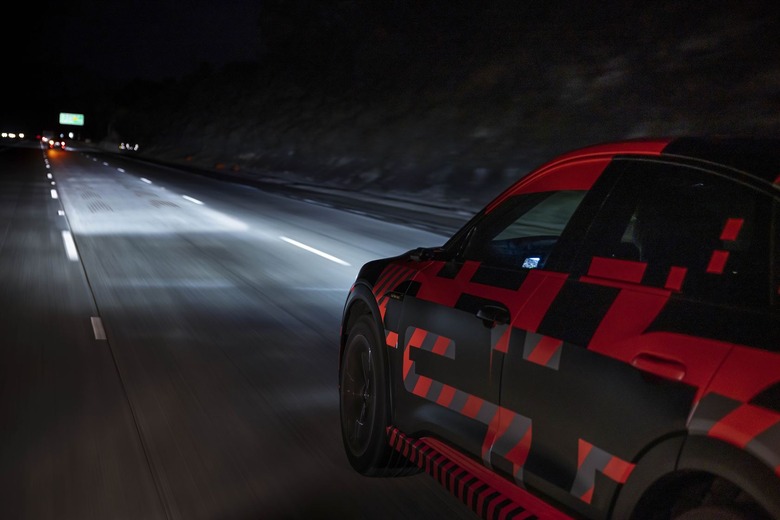
It's like having a guiding light from a spiritual being that constantly adjusts the edges of the beam to project, in real-time, a 10 to 50-meter carpet of light. The heart of the system consists of a revolutionary chip manufactured by Texas Instruments stateside. Yes, the irony of the situation is much easier to understand. Don't ask me why a potentially trailblazing feature is considered illegal by federal and state laws, especially considering the main component that makes the system work is manufactured right here on U.S. soil. That's an entirely separate topic worth discussing, but my point is this system is so innovative that I seriously think the government needs reconsider.
Each headlight assembly is capable of projecting up to 1.2 million individual pixels of light. With two headlights, the number doubles to 2.4 million pixels, which evidently means the headlights can theoretically project an entire movie in the front of the vehicle, albeit in black and white. If watching black and white movies projected outside of your hi-tech Audi e-tron Sportback doesn't sound appealing, don't worry. I hear Audi is working on developing colored pixels for the next generation of digital matrix LED technology, although whether you'll be able to actually buy it depends, again, on existing and future government rules.
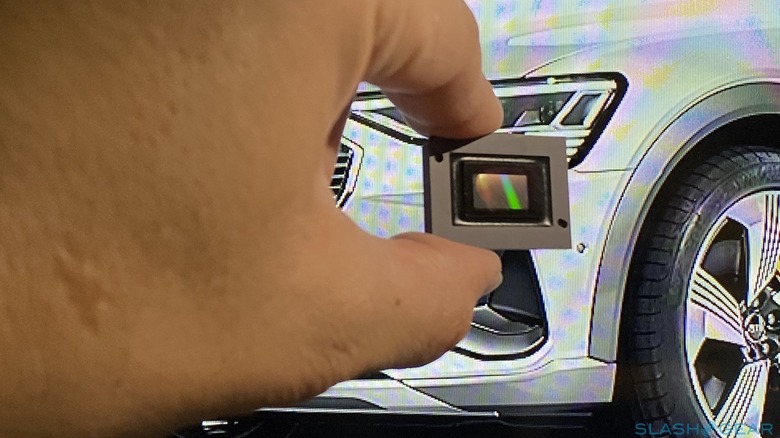
"For the future, what we are thinking about is communication in front of the car or communications around the car to, let's say, warn bicycle riders on the right side of the car and pedestrians on the left side," said Stephen Berlitz, Head of Lighting Innovation at Audi, as we drove around rural Los Angeles in the wee hours of the morning. "We might have something for you at next year's CES, probably the same technology applied to rear lights, but that's all I can say for now," Stephan teases.
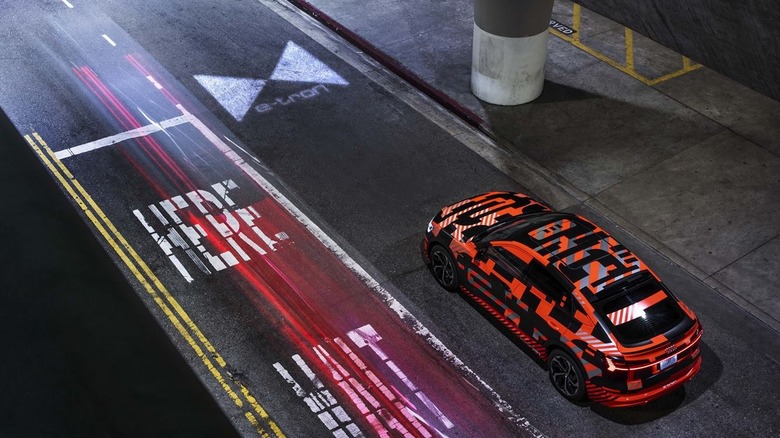
The carpet of light – or what Audi likes to call its 'blanket of light' – cast by the Audi e-tron Sportback works in conjunction with the cameras utilized by the autonomous driving system. The light can shrink or grow depending on highway conditions. However, the system is only designed for highway driving: it only activates upon reaching 40 mph and above, and it only works if the road has visible lane markings.
Sadly that means no, you can't have a carpet of light when driving around the neighborhood, no matter how cool that would look. Then again, all of this chatter is meaningless if it doesn't make it stateside. In Europe, the system costs an additional £4,000 more (around $4,400) over the e-tron Sportback's base price, and while that's a lot of money, it seems a fitting price to experience the future of automotive lighting.

